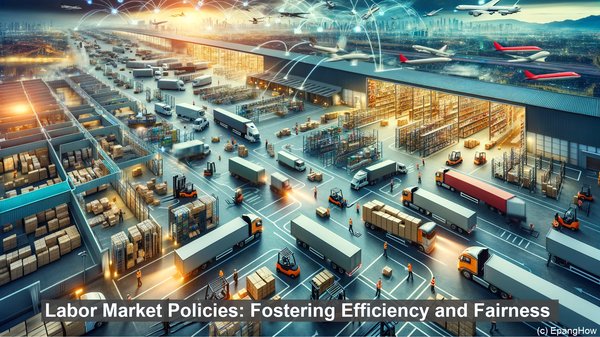Introduction: The Dual Pillars of Economic Policy
Hello everyone, and welcome to today’s article! When we talk about economic policies, two key pillars that often come to mind are labor market policies and social welfare policies. These policies are instrumental in shaping the economic landscape, but they serve distinct purposes. Let’s dive deeper into their differences and understand their significance.
Labor Market Policies: Fostering Efficiency and Fairness
Labor market policies are primarily concerned with the functioning of the job market. They aim to ensure a balance between the demand for labor and the supply of available workers. These policies encompass a wide range of measures, from minimum wage regulations to employment protection laws. The overarching objective is to create an environment that promotes fairness, efficiency, and productivity in the labor market.
Key Components of Labor Market Policies
Labor market policies encompass several key components. One such component is the provision of unemployment benefits. While these benefits provide a safety net for individuals who are temporarily out of work, they also serve as an incentive for individuals to actively seek employment. Another crucial aspect is the establishment of minimum wage standards. By setting a baseline wage, labor market policies ensure that workers are not exploited and receive a fair remuneration for their efforts.
Social Welfare Policies: A Safety Net for Society
In contrast to labor market policies, social welfare policies have a broader scope. They are designed to address societal inequalities and provide support to vulnerable sections of the population. These policies encompass areas such as healthcare, education, and housing. The underlying principle is to ensure that every individual has access to basic amenities and opportunities, irrespective of their socio-economic background.

The Holistic Nature of Social Welfare Policies
Social welfare policies are often multi-faceted, involving various programs and initiatives. For instance, healthcare policies may include provisions for affordable medical services, insurance coverage, and public health campaigns. Similarly, education policies may encompass measures such as scholarships, school infrastructure development, and teacher training programs. The objective is to create a society where everyone has equal access to essential services and can lead a dignified life.

Interplay Between Labor Market and Social Welfare Policies
While labor market policies and social welfare policies have distinct objectives, they are not mutually exclusive. In fact, there is often an interplay between the two. For instance, a robust labor market policy that ensures fair wages and job security can reduce the need for extensive social welfare programs. Conversely, effective social welfare policies that provide adequate support can enhance the overall functioning of the labor market.
